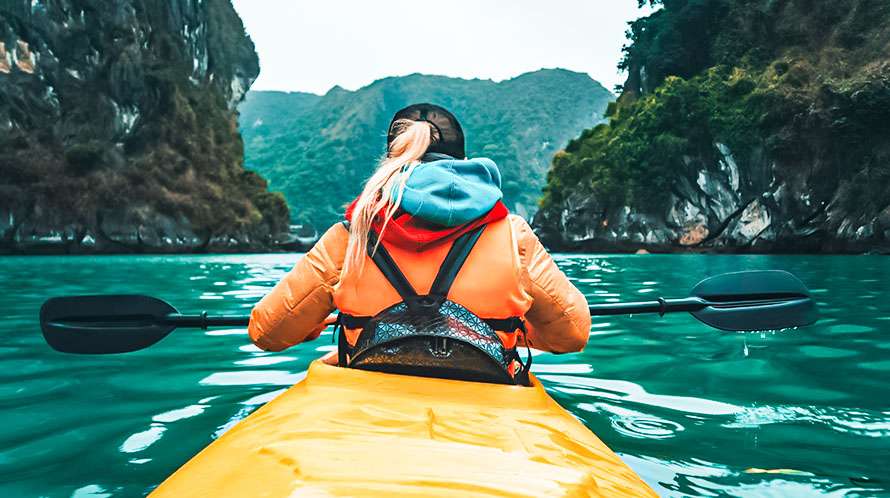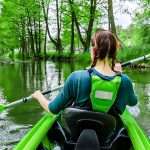Kayaking is a relaxing activity and through it you get the chance to spend time close to nature. The kayaking lovers opt for summer and fall months, mostly. However, that does not mean you cannot or should not enjoy the activity in the winter months at all. Not everywhere water is frozen in those months! Besides, winter kayaking comes with a few advantages over kayaking in the peak season. Of course, you have to pack in the right accessories and wear suitable attire to beat the chilling cold.
The Advantages Of Kayaking In Winter
When you indulge in kayaking in the winter months, you deal with reduced crowd- for sure. This means the rivers and lakes will not be polluted and crowded.
Another notable advantage of kayaking in winter is the reduced number of insects and snakes. The reptiles mostly hibernate and the insects thriving in summer months in water and trees along the shoreline are absent in winter.
Since there is less disruption around, you get more time for capturing lovely snaps. Based on your location, you can enjoy sight of wildlife including the migratory birds.
Preparing For The Winter Chill When You Do Kayaking
It is imperative that you dress well for kayaking in winter. This is not just about wearing thermal vests and a thick waterproof jacket. Your body will cope with heat loss in many ways. The cold water will make the kayak surface cold. The chilling wind will make your skin and hair feel cold. You can’t also rule out occasional and accidental contact with cold water. So, you have to wear several layers of clothing eventually to stay safe.
Apart from buying apt winter gears and clothing for paddling in winter, you can prepare the kayak too. You can buy specially insulated bottom kayaks or equip the existing kayak with an additional layer beneath.
So, What Clothing Do You Need For Winter Kayaking?
- First of all, you will need a drysuit for winter kayaking. It offers enough insulation to save you from cold shock in case you fall into water. It also traps radiant heat emitted by the body.
- You will also need to wear a life vest. It helps you float in water minus hassles.
- The veteran kayaking lovers wear neoprene hoods.
- Your hands get cold fast and so you can wear Neoprene gloves.
- You also need to wear neoprene boots and warm socks.
- It would be good if you carry some additional clothing and keep a first aid it with you.
- For keeping body warm, wear a fleece, crew-neck pullover sans zipper as the middle layer clothing.
- You also need to wear body-hugging thermal innerwear.
Ensure that any apparel or accessory you buy for kayaking is suited for your body. There is nothing worse than fumbling with an oversized hoodie or trying to squeeze in a tight sock.
Things You Need To Observe For Ice Formation
Kayaking in winter is fun as long as you keep your eyes and ears open! It is not only the weather updates that you have to watch. As you paddle in cold water, ice formation can affect the kayak accessories.
The splashes and drips caused by the paddle can lead to quick ice formation on the deck. So, stuffs kept on the deck such as the paddle float and bilge pump will become frozen quickly. Remember the frozen deck bungee cords are nearly useless as they lose elasticity. A frozen grab handle makes a wet exit impossible. So, keep checking these items every now and then for ice formation as you keep paddling.
The floating ice on the water does not remain static, as you will see. These move with water current and flow of wind. This can hinder the kayak movement to an extent. You also need to check the shoreline as it can be slippery.
Tips To Stay Safe While Kayaking In Winter
There is no denying that winter kayaking involves some amount of risk. By adopting the below listed safety tips, you should be able to evade mishaps:
In winter months, do not venture into a lake or river with freezing cold water without a friend or fellow kayaker. It is also better that you let a friend or neighbour know that you are venturing out for kayaking on such days. Also ensure you have decent kayaking skills for sailing though cold water with chunks of ice on surface.
It is necessary that you carry communication devices like whistles and strobe lights. These come in handy when you need rescue. In foggy weather, these will help others locate you and vice versa.
It is also prudent that you stay updated on winter weather hazards. In some places, a sunny winter day can be affected by intermittent rainfall and winds. Strong gusts of wind can make you feel cold while paddling. The days with snowfall possibility are not suited for kayaking.
You will need plenty of energy for kayaking in the winter months. The efforts needed to break layers of ice every now and then and coping with the chilling wind can make you weary. Never venture for kayaking in winter with an empty stomach. Have a sumptuous meal or a good breakfast before you start sailing. Staying hydrated and well-fed reduces the risk of developing hypothermia lest you fall in the water. If you plan to paddle for some hours at a stretch, keep some food and beverage with you. Carrying warm water or steaming coffee in a thermo flask can be a good idea.
When you indulge in kayaking in the frosty winter days, it will be a good idea to stay near the shoreline. Whether you head to a big lake or river for kayaking in such times, refrain from getting away from the shore. This will ensure you can seek help and draw attention of others quickly if there is capsize.
Despite the best intentions, accidents do happen. That is applicable for kayaking as well. So, you need to learn the technique to re-enter the kayak in case you fall in water accidentally. The minimum time you have to spend in freezing-cold water is better.
Last modified: March 12, 2022


